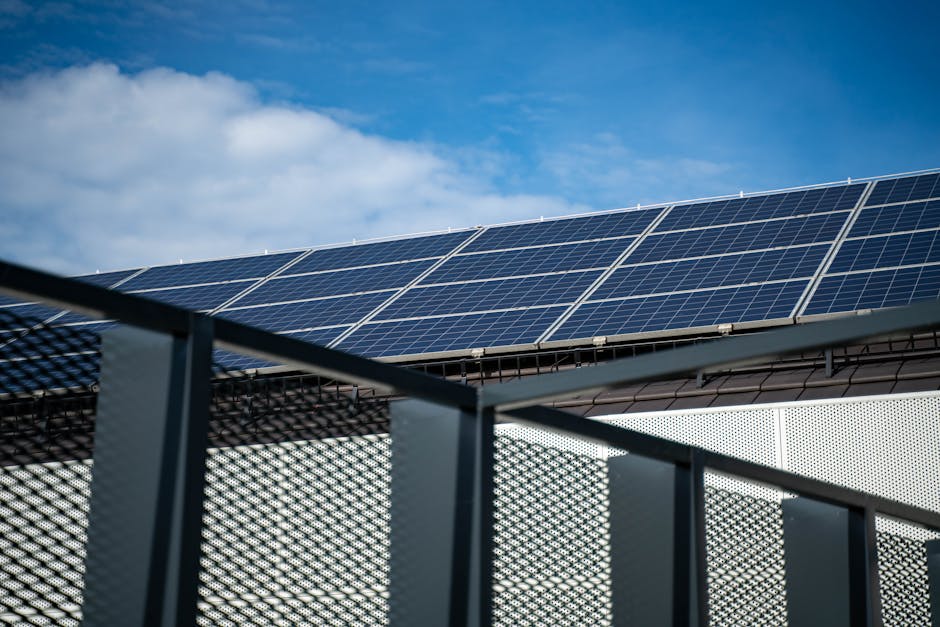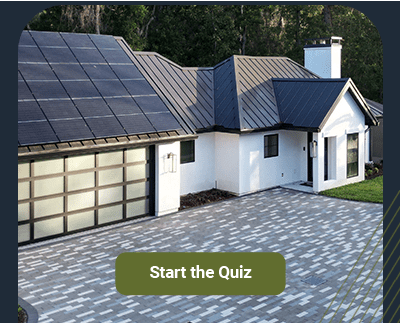How Modern Roofs Improve Home Energy Efficiency
Does a new roof help energy efficiency? In short, yes! A new roof can dramatically improve your home’s energy efficiency, leading to significant savings on your utility bills.
Here’s how:
- Improved Insulation: Keeps heat in during winter and out during summer.
- Better Reflectivity: Reflects more sunlight, reducing cooling costs.
- Improved Ventilation: Reduces heat buildup in your attic.
- Modern Materials: More durable and energy-efficient options.
Modern roofs offer multiple benefits beyond a fresh look. By upgrading, you get better insulation and other advanced features that lower your home’s energy consumption. Over time, this results in substantial savings on heating and cooling costs.
Let’s explore the specifics of how a new roof can improve your home’s energy efficiency and save you money.

How Does a New Roof Help Energy Efficiency?
Superior Insulation
One of the most significant benefits of a new roof is superior insulation. Modern roofing materials often have higher R-values, which measure the material’s resistance to heat flow. Higher R-values mean better insulation, leading to less heat transfer from the outside to the inside of your home. This makes it easier for your heating and cooling system to maintain a comfortable temperature, ultimately reducing your energy bills.
Improved Reflectivity
New roofs can also improve your home’s energy efficiency through improved reflectivity. Reflective roofing materials, also known as cool roofs, are designed to reflect more sunlight and absorb less heat. This keeps your home cooler, especially during the hot summer months, and reduces the need for air conditioning.
Cool roofs can also help mitigate the urban heat island effect, where densely populated areas become significantly warmer than surrounding rural areas due to heat absorption from buildings and roads.

Better Ventilation
A well-ventilated roof allows for better air circulation, reducing heat buildup in your attic. This minimizes the strain on your HVAC system, leading to lower energy bills. Proper ventilation also helps prevent moisture buildup, which can lead to mold growth and structural damage.
Types of roof vents include:
- Static Vents
- Wind-Powered Vents
- Electric Vents
Each has its pros and cons, and the right choice depends on your home’s specific needs. Generally, aim for a ratio of 1 square foot of ventilation for every 300 square feet of roof surface.
Superior Materials
Modern roofing materials are engineered to be more durable, weather-resistant, and energy-efficient. For example, today’s shingle roofing is long-lasting and requires minimal maintenance. These materials often have a high thermal mass, which means they can absorb and retain heat, reducing your energy bills.
Many modern roofing materials are also recyclable, making them an environmentally-friendly choice. This not only helps in saving energy but also reduces waste, contributing to a more sustainable environment.
By focusing on these key areas—insulation, reflectivity, ventilation, and modern materials—a new roof can significantly improve your home’s energy efficiency. This translates to lower utility bills and a more comfortable living environment.
Next, we’ll explore the different types of energy-efficient roofs available and how they can further benefit your home.
Types of Energy-Efficient Roofs
Metal Roofs
Metal roofing is one of the top choices for energy efficiency. These roofs are highly reflective, bouncing back much of the sun’s energy instead of absorbing it. This keeps your home cooler in the summer, reducing the need for air conditioning. Metal roofs can last over 50 years and require little maintenance, making them a cost-effective long-term investment.
Additionally, metal roofs can be coated with special reflective paints to improve their efficiency even further. These coatings increase the Solar Reflectance Index (SRI), helping to keep surface temperatures low.
Tile Roofs
Tile roofs, made from materials like clay, slate, or concrete, are another excellent option. They can be pre-treated with reflective coatings to maximize heat reflectivity. Even if your tile roof is already installed, you can still apply these coatings to improve its efficiency.
Tile roofs also allow for airflow beneath the tiles, which helps release any heat they do absorb. This natural ventilation reduces heat transfer into your home, making it easier to maintain a comfortable indoor temperature.
Asphalt Shingles
Asphalt shingles are the most common roofing material for homes, and recent advancements have made them more energy-efficient. Modern asphalt shingles can include solar-reflecting granules that raise their SRI value. This technology helps keep surface temperatures lower, extending the life of the roof and reducing heat transfer into your home.
For example, Owens Corning’s “Cool Roofing Collection” features shingles with a reflectance value over 20. These shingles come in various colors, including darker shades that traditionally had low solar reflectance.
Not all asphalt shingles are energy-efficient. Without the solar-reflecting granules, an asphalt shingle roof can be up to 100 degrees hotter, transferring that heat into your attic and home.

By understanding the different types of energy-efficient roofs—metal, tile, and asphalt shingles—you can make an informed decision that best suits your home’s needs and climate. Each material offers unique benefits in terms of reflectivity, longevity, and maintenance, all contributing to a more energy-efficient home.
Next, we’ll dig into the additional benefits of installing a new roof, beyond just energy savings.
Additional Benefits of a New Roof
Increased Resale Value
A new roof can significantly boost your home’s resale value. According to recent surveys, homes with newer roofs are more attractive to buyers. Most homebuyers prefer properties that are move-in ready and require minimal immediate investment. If your roof is old or damaged, potential buyers may hesitate or negotiate for a lower price. In contrast, a new roof can increase your home’s marketability and help you recover up to 94% of the cost when you sell.
Improved Curb Appeal
A modern roof doesn’t just perform better; it looks better too. Upgrading your roof can dramatically improve your home’s aesthetic appeal. New roofing materials come in various styles and colors, allowing you to choose a look that complements your home’s architecture. This modern look can make your home stand out in the neighborhood, creating a positive first impression for visitors and potential buyers alike.
Protection Against Elements
One of the most crucial benefits of a new roof is its ability to protect your home from the elements. Modern roofing materials are engineered for durability and weather resistance. They can withstand harsh conditions like heavy rain, strong winds, and even hail. This means fewer repairs and a longer lifespan for your roof. Additionally, superior materials often include features that prevent moisture buildup, reducing the risk of mold and structural damage.
Investing in a new roof offers more than just energy efficiency. It increases your home’s resale value, improves its curb appeal, and provides robust protection against the elements. Next, we’ll address some frequently asked questions about energy-efficient roofs.
Frequently Asked Questions about Energy-Efficient Roofs
Can a new roof make your house more energy-efficient?
Absolutely! A new roof can greatly improve your home’s energy efficiency. Here’s how:
Insulation: Modern roofing materials offer superior insulation, which means they have higher R-values. Higher R-values indicate better resistance to heat flow, keeping your home warmer in winter and cooler in summer. This reduces the workload on your HVAC system and lowers your energy bills.
Reflectivity: Many new roofs feature reflective materials, often called “cool roofs”. These materials reflect more sunlight and absorb less heat. According to GreenBuildingAlliance.org, lighter-colored roofs can significantly reduce rooftop temperatures, leading to energy savings of up to 15-20%.
Ventilation: Proper ventilation is key to maintaining a stable attic temperature. Good ventilation reduces heat buildup, which in turn decreases the strain on your cooling system. This not only saves energy but also extends the life of your roof.
What is the best roof for energy efficiency?
Metal Roofs: Metal roofs are highly reflective and can last for decades with minimal maintenance. They reflect more sunlight and stay cooler than traditional roofs. Their longevity and low maintenance make them a cost-effective choice.
Tile Roofs: Tile roofs, especially those made from clay or concrete, have excellent airflow and heat release properties. They can also be coated with reflective materials to improve their energy efficiency.
Asphalt Shingles: Modern asphalt shingles often come with solar-reflecting granules. Energy Star-rated shingles are designed to reflect more sunlight, reducing heat absorption. They are also a budget-friendly option for many homeowners.
Will a new roof help cool my house?
Yes, a new roof can help cool your house in several ways:
Cooling: Reflective roofing materials bounce back more sunlight, which keeps your home cooler. This is particularly beneficial in hot climates where cooling costs can be high.
Ventilation: Improved ventilation systems in new roofs ensure better air circulation. This prevents heat buildup in your attic, making your home cooler and reducing the need for air conditioning.
Energy Savings: By lowering the indoor temperature, a new roof reduces the amount of energy needed for cooling. This translates to lower utility bills and a more comfortable living environment.
Investing in a new roof is a smart choice for enhancing energy efficiency. Whether through better insulation, improved reflectivity, or superior ventilation, a new roof can make your home more energy-efficient and comfortable.
Conclusion
In conclusion, upgrading to a new roof is a smart investment for homeowners looking to improve energy efficiency and save on utility bills. At HW Roofing, we understand the importance of a well-installed, modern roof. Our expert team is dedicated to providing you with the best roofing solutions custom to your needs.
Energy Savings: A new roof can significantly reduce your energy costs. With superior insulation, improved reflectivity, and better ventilation, your HVAC system won’t have to work as hard. This means lower utility bills and a more comfortable home.
Modern Roofing Benefits: Modern roofing materials are designed to be durable, weather-resistant, and energy-efficient. They offer superior insulation, reflect more sunlight, and ensure better air circulation. Additionally, many of these materials are recyclable, making them an environmentally-friendly choice.
Investing in a new roof also comes with added benefits like increased resale value, improved curb appeal, and better protection against the elements. By choosing HW Roofing, you can rest assured that you’re getting a high-quality roof that will serve you well for years to come.
Ready to improve your home’s energy efficiency with a new roof? Contact HW Roofing today to schedule a consultation and start saving on your energy bills.



